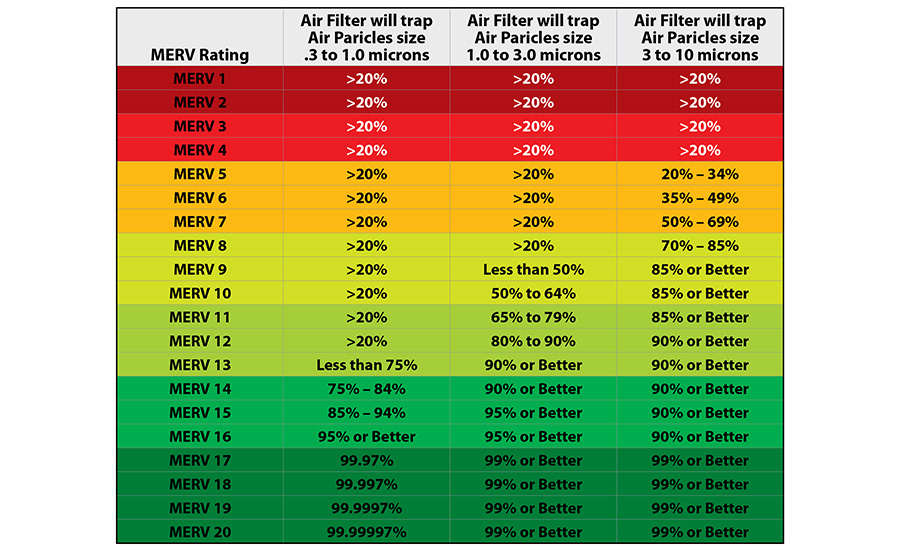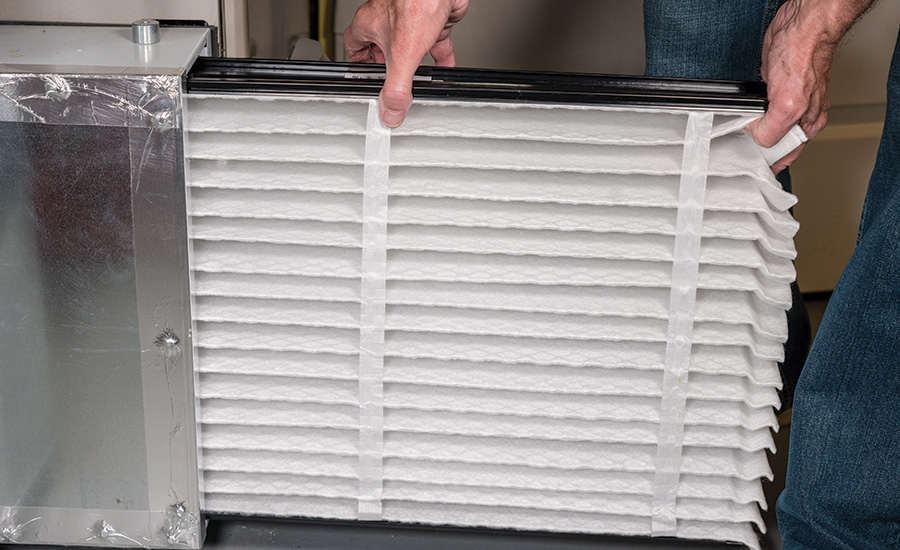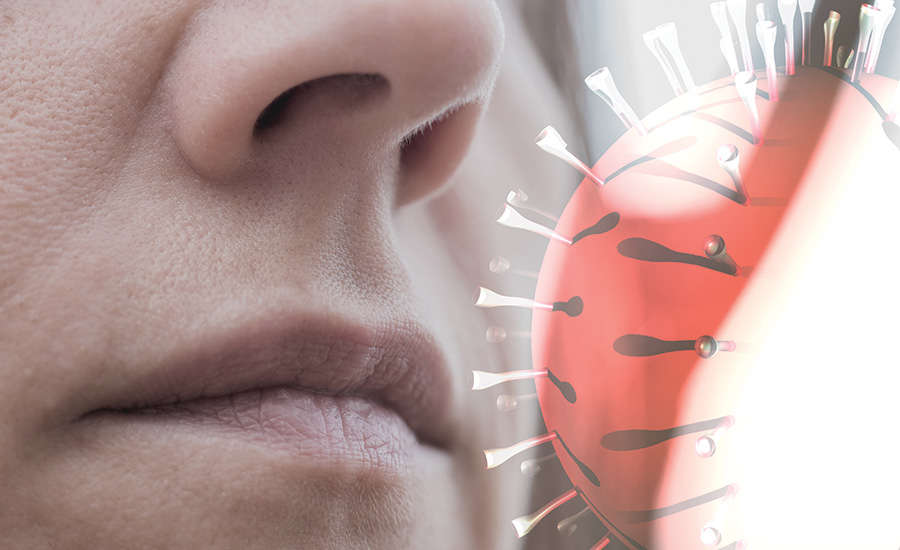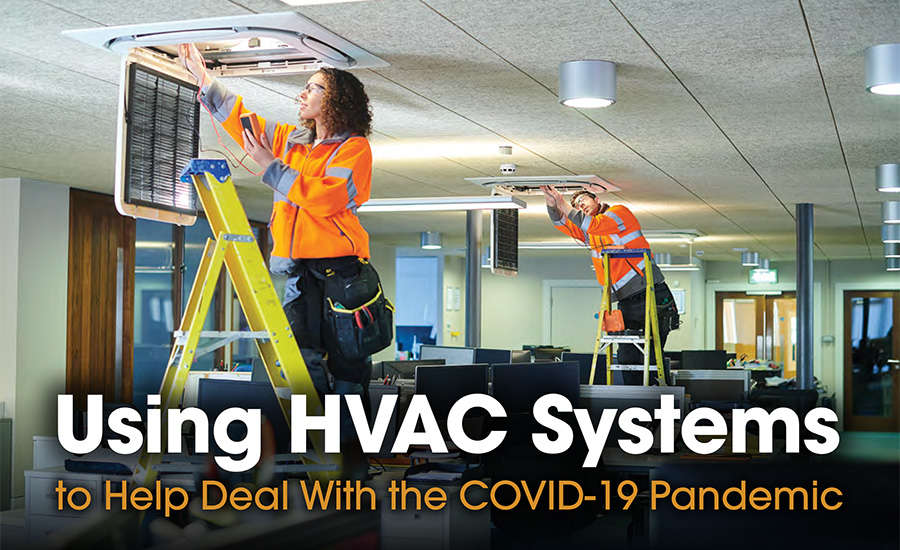Protecting return-to-work individuals who had been restricted from gathering in an effort to minimize the spread of COVID-19, and efforts to reopen public indoor spaces safely have led to a lot of interest in how HVAC systems may be adjusted to reduce the spread of the virus. In response to these questions, many products are being marketed heavily to the owners and managers of properties, as well as to restoration contractors as a potential adjunct to their core business. Advertised HVAC add-ons claim significant efficacy in combating airborne pollutants for a low investment cost.
With claims that seem to be too good to be true and obvious flaws in some of the science being offered to support the marketing, two environmental companies decided it was necessary to sort fact from fiction regarding some of the technologies that are available for HVAC. The result of their extensive research was a white paper entitled: A Review of Enhancements to HVAC Systems Marketed to Address COVID-19 and Improve Overall Air Quality. What is critical to note about the white paper is that neither Wonder Makers nor Mathias Environmental has any financial ties to manufacturers or distributors of products discussed in the report.
Numerous advertised technologies were reviewed for the white paper, including ultraviolet lights, ozone machines, electrostatic precipitators, and ionizers. While all of that information in the white paper is helpful, this article focuses on two types of technology that are familiar to the restoration industry:
- traditional filtration
- hydroxyl radical generators
Traditional Filtration
Until recently, HVAC filters were primarily designed to protect the mechanical components of the HVAC system by keeping debris and large particles from entering the fans, coils, and control mechanisms. By the 1980s, a substantial shift in thinking was to use filtration as a means of protecting the occupants. In 1987, the American Society of Heating Refrigeration and Air-Conditioning Engineers (ASHRAE) developed a report to describe the effectiveness of air filters by rating them according to their Minimum Efficiency Reporting Value, commonly known as MERV. The MERV evaluation grades filters with a numerical value from 1 to 20, with 1 representing the lowest filtration efficiency, and a filter rated at 20 providing the greatest filtration (see figure 1).

(Graphic courtesy of Wonder Makers Environmental.)
Figure 1: Chart of minimum efficiency reporting values (MERV) by particle size
The typical, one-inch fiberglass furnace filter has a MERV rating from 1 to 4. Most typical new HVAC systems accept medium level 1 to 2-inch pleated filters in the 6 to 8 range on the MERV chart. In addition to concerns about airborne particulates and allergens, the current pandemic forced people to take a good look at the filtration provided by their HVAC systems as a potential means to slow the spread of the virus.
Because the average size of viral contaminants is approximately 0.1 microns (µ), such particles were not getting screened out in any meaningful way by typical HVAC filters. Even medium efficiency filters (MERV rating of 12) only screen about 20% of the contaminants at the smallest measured particle size (0.3 to 1.0 µ) with every pass through the system. That is why ASHRAE made a recommendation in a report released during the early stages of the pandemic encouraging building owners to: Improve central air and other HVAC filtration to MERV-13 (ASHRAE 2017b) or the highest level achievable; and keep systems running longer hours (24/7 if possible). This recommendation is based on the fact that filters rated at MERV-13 or higher screens out sub-micron particles at 75% or better.
While filtration is desirable, it generally has limitations and comes at a cost. Traditional filtration methods use smaller and smaller pore sizes on the filter media to trap small particulates; oftentimes by stacking multiple layers or pleats in sequence. However, this filtration efficiency creates greater and greater resistance to the airflow and increases the energy necessary to run the fans. A more significant limiting factor is the fact that traditional filter material with a greater capture efficiency creates a pressure differential in the HVAC system, which often exceeds the design capacity and puts the entire system at risk of failure.

Image from BackyardProduction/iStock / Getty Images Plus via Getty Images
New Filtration Products
In response to the ASHRAE recommendation, numerous products have been offered to increase HVAC filter efficiency without creating adverse pressure differentials. Two types of filter media have been promoted extensively to assist in improving HVAC filtration: 1) tackified filter media, and 2) media that is created with a static electric charge. Tackified filter media typically is a non-woven polyester fabric with a sticky substance applied to one side of the filter. This oil or glue residue leaves the surface “tacky” and increases the rate of particle capture without significantly restricting the airflow. This sort of filtering material has been available for over a decade in the restoration industry to improve the particle capture of pre-filters on negative air machines in order to make the substantially more expensive HEPA filters last longer.
Another way to increase capture efficiency without creating substantial back pressure is to impart an electrostatic charge to the media filter material. In these products, the media is made so that the fibers carry an electrical charge, which attracts particles as the air passes through the filter. Although both of these techniques can improve filtration efficiency without significant addition to the pressure differential, the filter lifespans tend to be significantly shorter than more traditional filter media. For example, some electrostatically-charged media may only have a lifespan of one to three weeks before the charge dissipates and small particles pass through unimpeded.
Over the past five years, several new styles of filter media have been developed that address these concerns by providing up to MERV level 16 filtration with very low air resistance1. The current drawbacks to such a filtering material involve the price (up to $20 to $450 per square foot, which for large commercial units would add thousands of dollars to the cost of filter replacements), limited availability, and limited independent testing to confirm the manufacturer’s claims.
Hydroxyl Generators
Hydroxyl radicals are unstable molecules that typically form in the air when one of the oxygen atoms is stripped away from a water molecule. This process changes a single stable H20 molecule into a highly reactive single oxygen atom, and equally reactive oxygen/hydrogen molecule; known as a hydroxide ion or hydroxyl radical (i.e. H2O = O + HO). The production of hydroxyl radicals occurs naturally in the upper atmosphere and leads to the natural breakdown of chemical and biological pollutants.
Since both the oxygen atom and hydroxyl radical are unstable and seek to reconnect with other materials in the air, they are extremely short-lived and usually last for less than a second. While they exist, hydroxyl radicals function as potent oxidizers, breaking down chemical compounds and organic matter. Perhaps more importantly, the hydroxyl radicals “kick-start” what can become a cascade of chain reactions, as different chemical compounds form, only to react with another nearby compound. These newly created intermediary compounds may also be short-lived and trigger additional reactions; or may survive longer, lasting hours or more.
Hydroxyl radical generators mimic the natural production of these reactive molecules. The two main technologies utilized in such equipment both involve ultraviolet light. Some units shine specific UV wavelengths on special catalyst materials (frequently titanium dioxide) to produce the hydroxyl radicals. Other devices use a different UV wavelength to break down some of the ambient humidity in the air. The systems that use a catalyst are not as dependent on an adequate supply of moisture in the air; making them simpler to install in HVAC systems, without having to add humidifiers, steam jets, or other sources of water.
One of the advantages that hydroxyl radical generators offer to the facilities manager or the homeowner is that the basic hydroxyl generation system can be made fairly small and easily installed in HVAC systems.

Image from aerogondo/iStock / Getty Images Plus via Getty Images
The Safety Question
Hydroxyl radical generators are frequently advertised as being safe for “people, pets, and plants.” While there is a significant amount of medical data supporting the safety of the actual hydroxyl radicals (primarily because of their extremely short life span), the safety question needs to consider both the unintended creation of ozone and the “cascade effect.” Depending on the technology used to create the hydroxyl radicals, such generators can generate small amounts of ozone. Generally, this secondary generation of ozone is well below the current occupational permissible exposure limits (PEL), but cannot be fully dismissed as a health concern, as hydroxyl radical generators installed inside HVAC units may run on a continuous basis.
Numerous studies have documented that as the hydroxyl radicals break down larger chemical molecules, the resulting materials may well have toxic properties that are as significant, or even more serious, then the original contaminant. The type and level of potentially dangerous compounds produced by the impact of hydroxyl radical generators are difficult to document, as they are unique to each particular environment. Even so, studies from the restoration industry indicate that when hydroxyl radical generators are used in environments with significant airborne contamination (such as fire residue), the level of dangerous compounds produced during the air cleaning process can be significant. This risk of producing unknown, potentially dangerous, byproducts from the hydroxyl radical cascade effect has been shown to be negligible in commercial and residential applications, where off-gassing of new building products has dissipated.

Image from mixetto/E+ via Getty Images
Conclusions
The understanding of what a “clean” indoor environment is has undergone a radical transformation in both the professional and public sphere over the course of recent events. Many facility owners and managers have begun searching for options to keep occupants safe as part of their re-opening plan.
For many situations, traditional filtration methods are still the most effective tool. They work reliably and can be made to fit almost any space. Upgrading the filtration level of existing HVAC equipment has the simple benefit of being able to work in combination with additional technologies if necessary. It is well known in the restoration industry that the best solution is to eliminate the exposure by physically removing the hazard. Enhanced filtration is physical removal of the airborne contaminants, whether they are smoke residue, mold spores, or viral particles. This helps to explain the new industry guidance, which is recommending MERV-13 filtration for HVAC units; an uncommon level of filtration for commercial and residential systems before the declaration of a pandemic.
Hydroxyl generators have yielded promising results for killing airborne contaminants. This does not come without some hesitation in using these systems in close proximity to building occupants. The tendency of some of these systems to inadvertently produce ozone is a reasonable cause for concern. Additionally, while hydroxyl radicals do not linger, many of the byproducts of the chain reaction produced by the introduction of hydroxyl radicals into the air have a longer lifespan, as well as known toxicity. Even hydroxyl radical generators that do not produce ozone as a byproduct should not be used in areas with significant off-gassing of VOCs; either because of the presence of new building products, or because of commercial or industrial processes in the building. Therefore, hydroxyl radical generators (as part of an HVAC system) seem best suited to address microbiological contaminants in ambient air conditions that do not have a substantial concentration of volatile organic compounds.
Regardless of technology being considered, neither restoration nor HVAC professionals should ever recommend supplemental equipment, simply to calm fears of owners or occupants, without knowing the complete picture of the full effects of the add-on equipment. In each situation that arises for the building manager or HVAC professional, education on how a system works is paramount to understanding if that system is right for their application. As one safety and health expert who specializes in infection control put it when explaining how HVAC systems could be helpful in addressing COVID-192: It is critical to remember that each indoor environment is unique; conditions within each indoor environment are dynamic, and there is not a one-size-fits-all strategy for infection control.
Note:
The entire white paper is available for free download at: www.wondermakers.com under their COVID-19 Resources tab, or from www.mathiasenvironmental.com under their Technical Writings tab.
Endnotes:
- 1. Two notable examples of new filter media with high capture efficiency and low static pressure: https://www.sandersfilters.com/containment-filters and https://www.dynamicaqs.com/commercial/products/v8-air-cleaning-systems
- Summary article on managing indoor air quality on the COVID-19: https://www.randrmagonline.com/articles/89119-how-to-manage-indoor-air-quality-amid-covid-19

